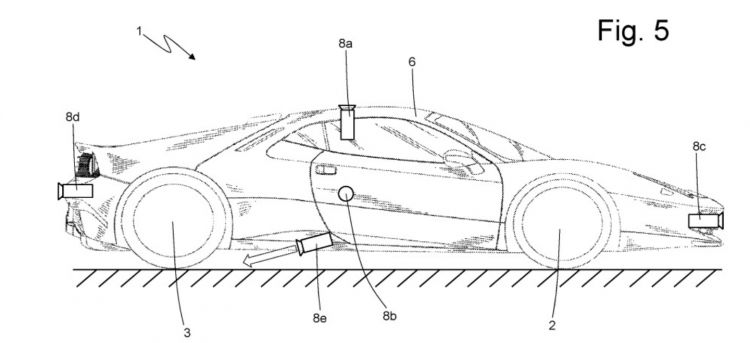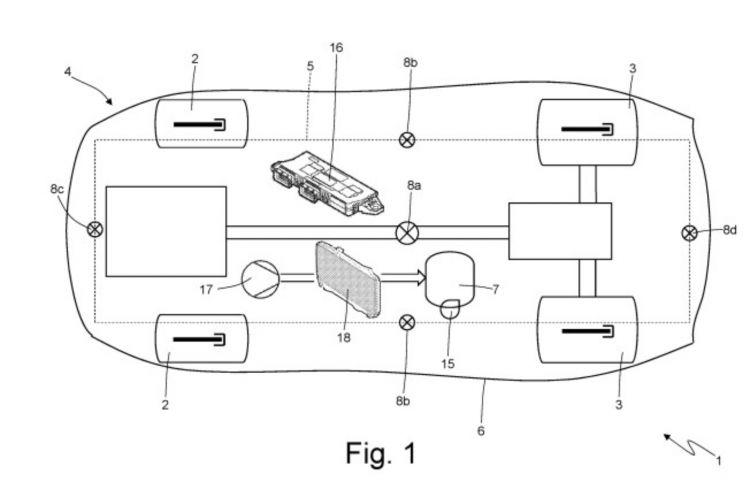Ferrari, as a good sports car manufacturer, is always looking for ways to get more performance out of its cars and, surely, it has a few hidden aces up its sleeve. In the United States Patent Registry we have discovered a clue to one of them: an application that reveals that, andn Maranello, they are investigating gas propellants that, in its day, Tesla promised.
Elon Musk was the first to talk about gas propellants for the Tesla Roadster: four years ago he assured that they would be part of the SpaceX package. Optional equipment for his electric car, which consisted of small motors similar to those used in rockets and based on high-pressure compressors. They would be located in the rear and with them would improve acceleration, braking capacity, cornering and maximum speed. So much so that it would go from 0 to 100 km/h in just over a second.
Ferrari’s system
Ferrari filed its patent at the end of 2019, the same year that Tesla announced its own. In it document it can be verified that the concept is similar, but not the same. The Italians have opted for a compressor that is attached to the front or rear axle and works with a heat exchanger, a device that transfers heat from one fluid to another with a lower temperature: the objective is that the density of the air is as high as possible. The entire system, according to the Italian manufacturer’s estimates, would add 40-45 kilos to the weight of the car.
In this way, the compressor can be used for recover the energy from braking and use it to compress the air which, in turn, could be used to accelerate the car, increase its speed in the corners… Ferrari would have chosen compressed air tanks with a pressure that would oscillate between 700 and 900 bars: figures that hydrogen vehicles already handle.
the thrusters
Ferrari’s system speaks of several propellants and in each of the locations it has multiple nozzles. In the patent application they describe five nozzles per propellant and each one has an orifice that becomes progressively larger. The idea is that when the reservoir is full and the pressure is high, the smaller version of the orifice can be used. to achieve the necessary force: Ferrari estimates that it would be about 5,000 N.
When it is emptier and the pressure is lower, the system will switch to a larger diameter nozzle to deliver the same force, albeit with a shorter thrust. In this way, it can be achieved a constant drive for a longer period of time.
Let’s remember: it’s a patent
Ferrari’s patent application does not guarantee that gas engines will go into production. Often, brands in the motor world patent technologies without concrete plans to use them. In this case, moreover, it is only a request: it has not even been granted, but, at least, the idea exists. And it is that if this system (or a similar one) became a reality, imagine how fast the Ferrari models would be… taking into account that, nowadays, they are not exactly slow.


